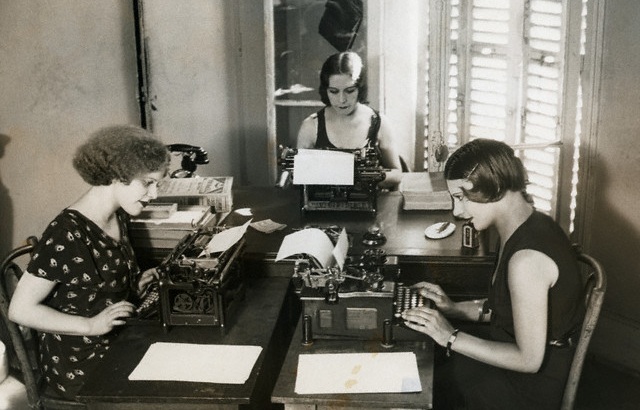It’s easy to romanticize the past and claim that everything we used to do in traditional media was the gold standard in a golden era. As a career coach, I talk a lot about how the skills we learned then have built us to be relentlessly dedicated to detail, ruthlessly creative, and obsessed with connecting with one audience: the reader. Those skills and the many others (after all #editorsmakethebesthires) we gained from working traditional media do transfer directly to new careers in communications, marketing, branded content, and so many others.
Yet, what I haven’t talked about, but should, is the habits from those days that we need to leave behind. We have to say goodbye not because they were bad habits back then (although maybe some of them were), but because they don’t transfer to today’s fast-paced, crowded media, tight budgets, and super-small content teams. It no longer makes sense, for instance, for a single 500-word story to go through five layers of editors and have five revisions before it runs. Or to send a revision back to a writer just to nit-pick an adjective here or an example there (just change it and Next!).
Of course you know that writing for digital is different. As is writing to a consumer or writing for a client. The reader is no longer just someone lounging over your lovely prose waiting to be surprised and delighted. Content is more purposeful now and to the point. Otherwise, you could lose that reader, that consumer, that future client.
Anyway. My point — look at me taking so long to get to my point! What an old media habit! — is that some things we need to put on a shelf. We can keep them at a safe distance yet gaze upon them with fondness as we do our new jobs. In that spirit, I asked my community of 1300+ former Magazine Editors what they thought should be left behind. Here’s what they had to say.
“It took me a while to stop making clever headlines. Straightforward is a must. Also, I had to drop the idea that content is static. In digital, we’re always making updates to try and move the dial on pageviews after a piece goes live. This has translated to fewer rounds of edits before publishing and making more adjustments after.” — Jessica Cassity, Global Digital Content Marketing Manager for Kerry Taste & Nutrition
“In the world of startups, done is better than perfect. Quality still matters, but you don’t have to be so precious about every word. Things change quickly, and you have to be ready to go with the flow.” — Betty Wong Ortiz, Director of Content at Blink Health
“I’ve had to relax my aversion to the royal “we” and exclamation points. Definitely more of an emphasis on direct, sales-oriented CTAs, too.” — Brooke Glassberg, Editor of barenecessities.com
“With women’s mags, there was always a lot of discussion around the subjects’ ages and whether they matched the demo. Find a woman between TK age and TK age and then mention her age in the text. It’s become a habit of mine to ask people their birthdates and insert their ages into copy. But I’m finding that most other places don’t care about that, unless, of course, a person’s age is relevant to the story somehow. Or if you’re purposefully trying to show a diversity of ages in a story.” — former women’s magazine editor / writer
“As a kid food blogger, I find that it’s very off putting for my readers if my photos and content is too inspirational. It needs to look good, but also be real and look very doable. (No need for a production crew, excessive—or any!—garnishes or a day propping before shoots!) I feel like I’m still working to get that balance right, but I’m very aware that it’s really different from working for a magazine.” — Amy Palanjian, creator of Yummytoddlerfood.com and author of the forthcoming cookbook for Kids, Food, Play!
“Rather than polishing the silver by overediting, look around and see what needs renovating, how you can make an impact.” — Laura Kalehoff, Founder of Kalehoff Creative, a remote content studio serving brands and publishers.
“In digital (I work in both print and digital), I’m still getting used to the fact that repetition is good. Meaning, repeating the same key words over and over and over.” — Lisa Bain, Executive Director, Health Newsroom, Hearst Lifestyle Group
“I think there’s a tendency to hang onto brand identity when brand identity is a lot more amorphous than it was. It used to be, people would pick up a magazine and know what they are reading. Now, they are clicking on a link through social. You’ll always have brand loyalists but holding onto too tight of a brand identity (“we can’t do a story like X, because it doesn’t fit into Y section”) and you miss the opportunity to find new readers and allow your content to evolve. Branding is much more fluid than it was in the past.” — Anna Davies, independent content strategist | consultant.
Photo: Oz Typewriter
Sign up for Ed’s weekly newsletter for Ed2010 and Talent Fairy exclusive job listings, offers, and insider career advice.




